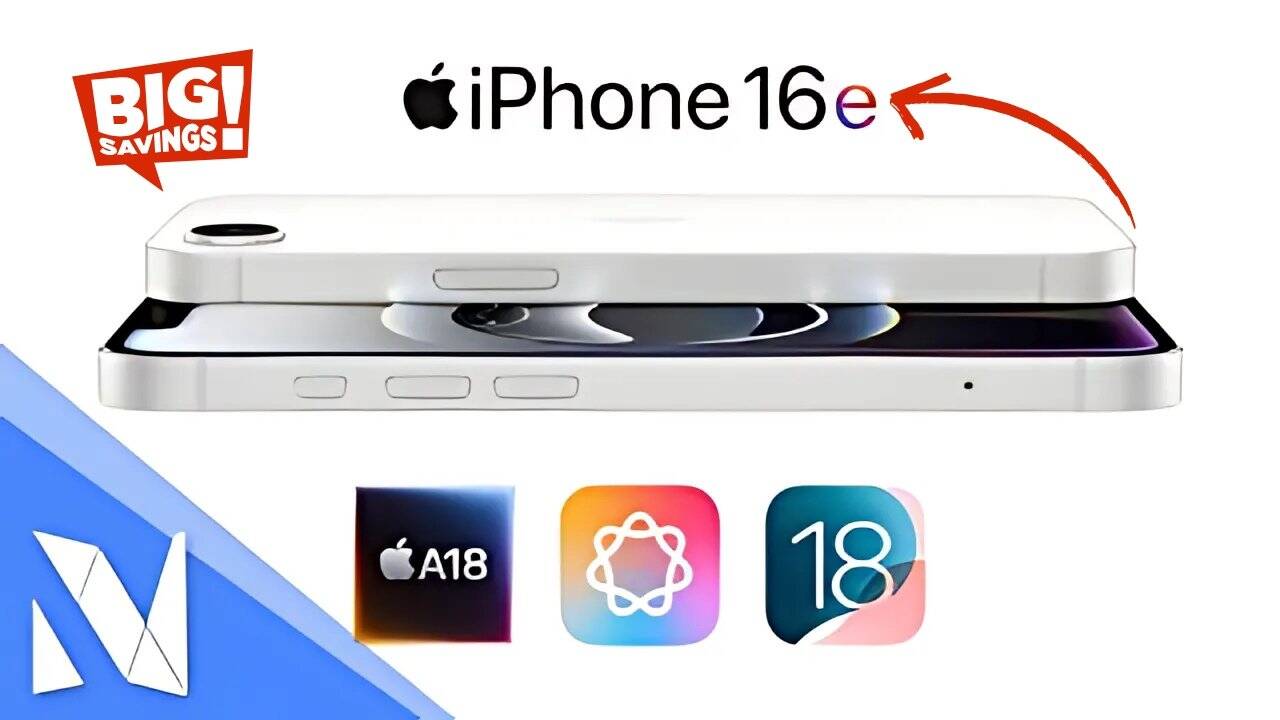iPhone 16e coming with 15.49 cm (6.1 inch) Super Retina XDR Display and A18 Chip 6 Core Processor
Market Context and Strategic Positioning
The smartphone industry has witnessed increasing polarization between ultra-premium flagship devices and budget-oriented alternatives, creating opportunities for manufacturers to capture the substantial middle ground. Apple's historical success with the iPhone SE series demonstrated significant demand for devices that combine modern performance with familiar design languages and accessible pricing.
An iPhone 16e would likely target users seeking Apple's ecosystem benefits and build quality without the premium pricing associated with flagship models. This positioning addresses a growing segment of consumers who prioritize long-term value, software support, and ecosystem integration over cutting-edge features they may not utilize regularly.
The timing of such a device release would be strategically significant, potentially coinciding with Apple's broader efforts to expand market share in price-sensitive regions while maintaining brand prestige. The "e" designation suggests an "essential" or "entry" positioning that focuses on core iPhone experiences rather than flagship innovations.
Design Philosophy and Construction
Based on Apple's established patterns with accessible devices, the iPhone 16e would likely feature a refined design that balances premium aesthetics with cost-effective manufacturing. The construction would probably incorporate high-quality materials while making strategic choices that maintain durability without the exotic materials found in flagship models.
The form factor might draw inspiration from previous iPhone generations, potentially featuring a familiar design language that appeals to users comfortable with established iPhone aesthetics. This approach would reduce development costs while providing a premium feel that distinguishes the device from budget alternatives.
Color options would likely include a curated selection that offers personalization without the extensive choices available in flagship lines. The finish quality would maintain Apple's reputation for attention to detail while optimizing manufacturing processes for efficient production.
Display Technology and Visual Experience
The display represents a critical component where Apple could implement strategic choices that balance quality with cost considerations. A high-quality LCD or entry-level OLED panel could provide excellent visual experiences while maintaining manufacturing efficiency.
Screen size would likely target the sweet spot between comfortable single-handed operation and immersive content consumption. The resolution would be optimized to provide sharp detail and vibrant colors without the pixel density premiums associated with flagship displays.
Display features might include essential technologies like True Tone color adjustment and adequate brightness levels for outdoor visibility, while potentially omitting advanced features like ProMotion variable refresh rates that add significant cost without universal user demand.
Performance Architecture and Capabilities
Apple's approach to performance in accessible devices has consistently focused on providing flagship-level processing power from previous generations, ensuring smooth operation and longevity. The iPhone 16e would likely feature a proven chipset that delivers excellent performance across contemporary applications and use cases.
This strategy provides several advantages, including mature manufacturing processes that reduce costs, established software optimization, and performance levels that exceed most users' daily requirements. The processing power would easily handle productivity applications, social media, gaming, and multimedia consumption.
Memory configurations would be optimized to support effective multitasking while maintaining cost efficiency. Storage options would likely include multiple tiers that cater to different user needs, from basic usage patterns to more demanding storage requirements.
Camera System and Photography Features
Photography capabilities represent an area where Apple could implement strategic feature selection that maintains quality while controlling costs. A simplified camera system focusing on excellent primary sensor performance could deliver outstanding results for most users.
The camera configuration might feature a high-quality main sensor with computational photography capabilities that leverage Apple's advanced image processing algorithms. This approach would produce excellent photos across various conditions while avoiding the complexity and cost of multiple specialized lenses.
Software features like Portrait mode, Night mode, and Smart HDR could be included to provide flagship-level photography experiences through computational techniques rather than hardware complexity. Video recording capabilities would likely support high-quality footage suitable for content creation and personal documentation.
Software Experience and Ecosystem Integration
One of the most compelling aspects of any iPhone, regardless of price point, is the software experience and ecosystem integration. The iPhone 16e would run the latest iOS version with full access to Apple's services and applications.
Long-term software support represents a significant value proposition, with Apple's track record of providing updates for several years after device release. This commitment ensures security, performance improvements, and access to new features throughout the device's lifecycle.
Ecosystem integration would include seamless connectivity with other Apple devices, iCloud services, and the App Store. These features provide substantial value that extends beyond the device itself, creating compelling reasons for users to choose Apple over alternatives.
Connectivity and Modern Features
Essential connectivity features would include 5G support to ensure future-ready network compatibility, Wi-Fi standards for fast internet access, and Bluetooth for peripheral connections. These features would position the device as a modern smartphone capable of taking advantage of current and emerging network technologies.
Security features like Face ID or Touch ID would maintain Apple's commitment to user privacy and device security. These implementations would use proven technologies that balance security effectiveness with manufacturing efficiency.
Battery Life and Charging Solutions
Battery performance would be optimized to support all-day usage patterns typical of modern smartphone users. Apple's expertise in power management would ensure efficient operation that maximizes battery life through both hardware and software optimization.
Charging capabilities would likely include support for fast charging and wireless charging, providing convenience features that users have come to expect from modern smartphones. The implementation would balance charging speed with cost considerations.
Market Impact and Competitive Analysis
The introduction of an iPhone 16e could significantly impact the mid-range smartphone market by providing Apple ecosystem access at more competitive price points. This positioning would challenge Android manufacturers who have traditionally dominated this segment.
The device would likely appeal to several user groups, including iPhone users seeking affordable upgrade paths, Android users considering ecosystem switches, and first-time smartphone buyers in emerging markets. The value proposition would emphasize long-term ownership benefits rather than cutting-edge specifications.
Potential Challenges and Considerations
Product positioning would require careful balance to avoid cannibalizing sales of more expensive iPhone models while maintaining sufficient differentiation from budget alternatives. Apple would need to communicate value propositions clearly to help consumers understand product hierarchy.
Manufacturing and supply chain considerations would influence availability and pricing strategies, particularly in international markets where price sensitivity varies significantly from Apple's traditional strongholds.
Future Implications
The success of an iPhone 16e could influence Apple's future product strategy, potentially establishing a permanent accessible tier in the iPhone lineup. This approach could expand Apple's addressable market while maintaining premium positioning for flagship devices.
The device could also serve as a platform for testing features and technologies that might eventually appear in flagship models, providing valuable user feedback and market validation.
Conclusion
While the iPhone 16e remains speculative, the concept represents logical evolution in Apple's product strategy. Such a device could provide compelling value for users seeking Apple's ecosystem benefits without flagship pricing, potentially expanding the company's market reach while maintaining brand integrity.
The success of such a product would depend on Apple's ability to balance feature selection, manufacturing costs, and market positioning to create a device that feels genuinely valuable rather than artificially constrained. If executed effectively, an iPhone 16e could establish new standards for accessible premium smartphones.





















